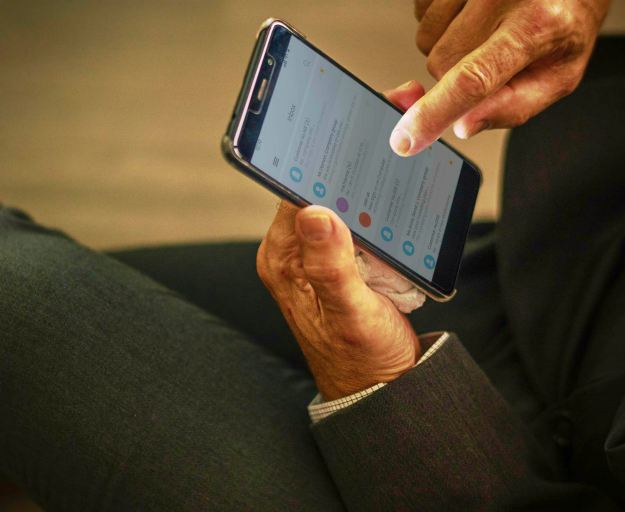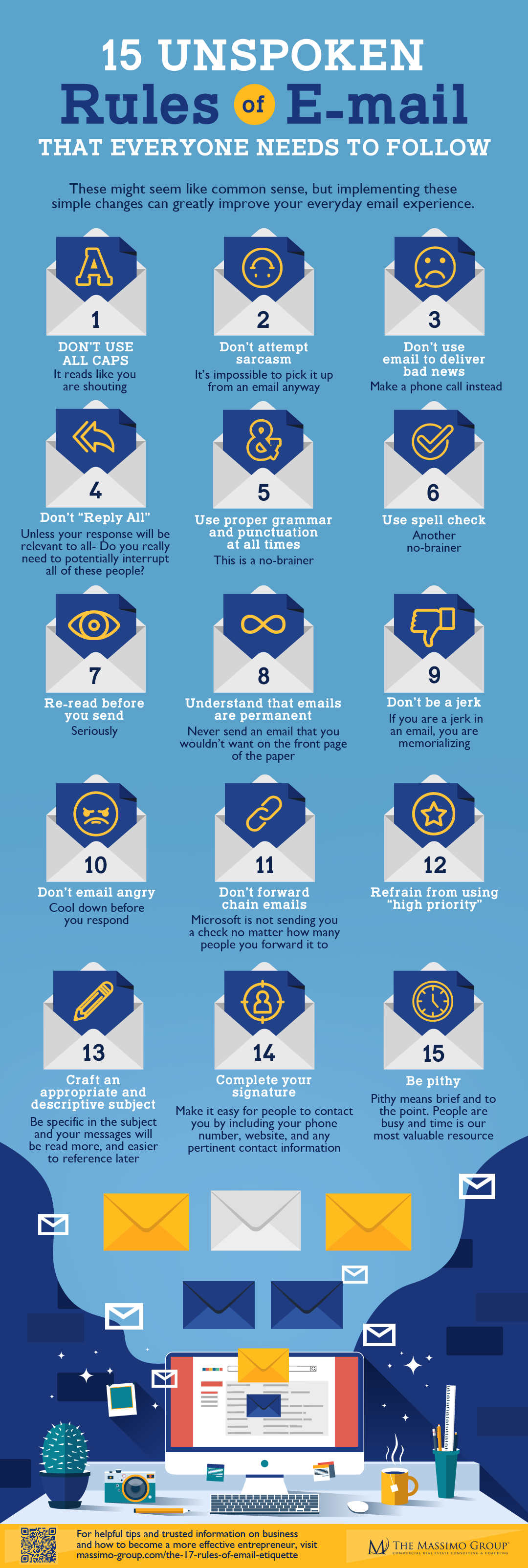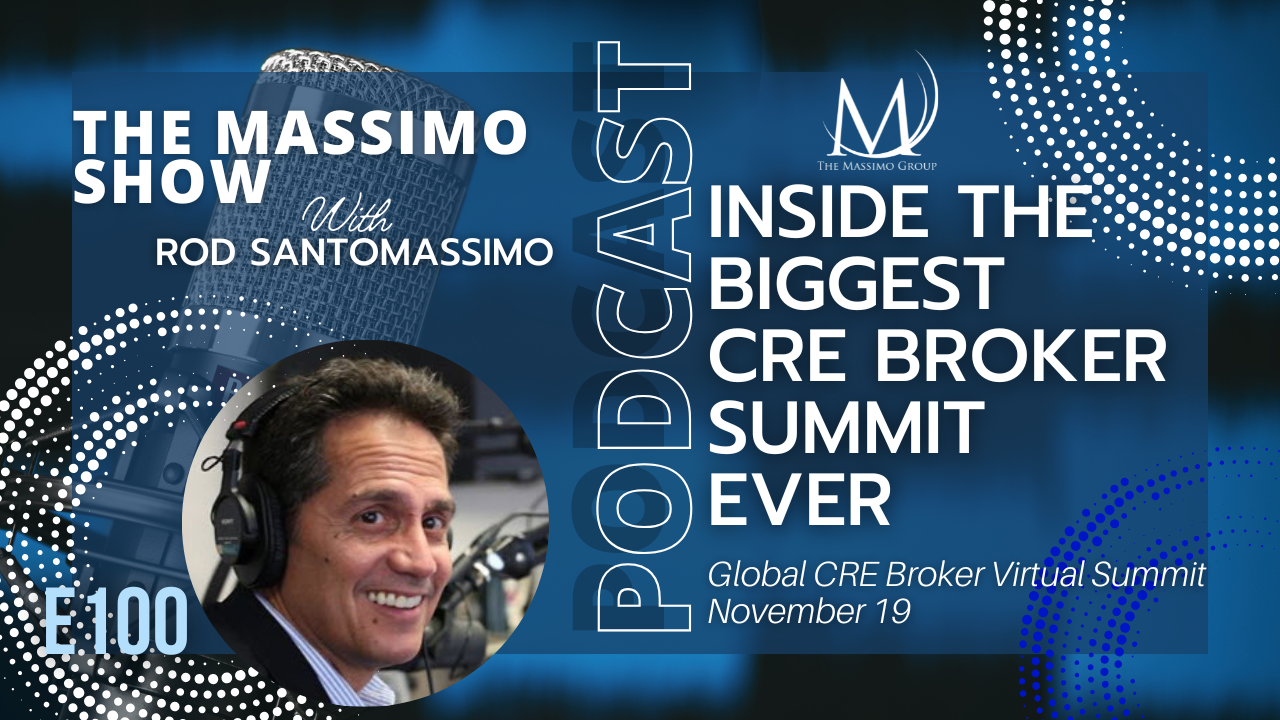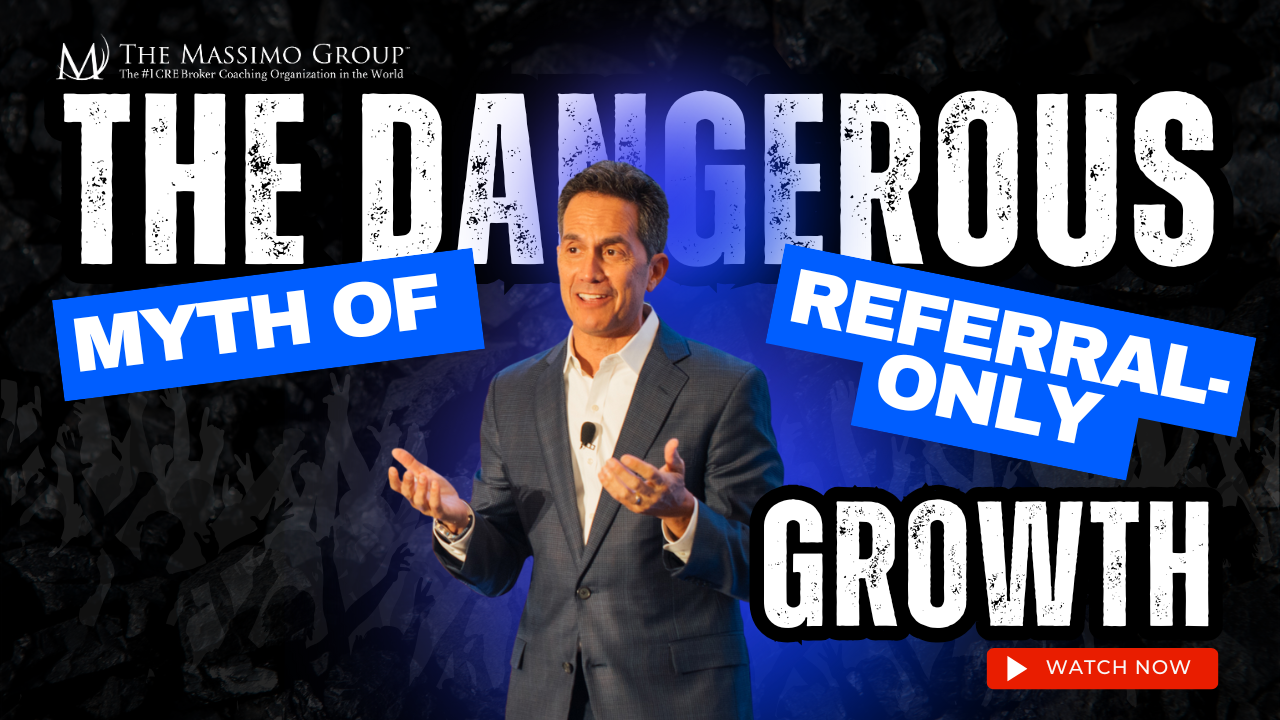Good business email etiquette can help boost productivity, maintain good relationships, and get a point across. Follow these email tips to up your inbox game.
In this article:
Email Etiquette Rules | Build a Brand through Proper Email Attitude
Laying the Ground Rules on Proper Email Etiquette
The email etiquette rules below will help you become a better co-worker or boss. Before we get into that, however, let’s lay some important ground rules.
I wrote a post on how to manage your email inbox. You can read it here.
My biggest beef with email is its ability to interrupt me. The nature of my business requires me to be doing multiple things. However, I am not a natural multi-tasker.
I much prefer to hone in on a task and focus all my energy on it, but I am also easily distracted. The ding and notification that announces every email can cost me 5 to 60 minutes if I let it.
I use email to grow my CRE, so I routinely get 200+ emails a day. That equates to 200+ opportunities to experience distraction from what’s important and potentially urgent.
Here are a few suggestions to prevent email from derailing your day:
1. Turn the Notifications Off
I really appreciate you taking the time to read this, but stop reading right now and turn the notifications off. You really don’t need to see an email the instant it arrives. If something is a true emergency, you won’t hear about it by email in the first place.
Turn off the pop-up notification and the audible ping. Then watch your productivity go up.
2. Schedule Specific Times to Check Your Inbox

The nature of your business will dictate this, but I suggest checking your email once or twice in the morning and then again in the afternoon.
3. Set Your Phone, iPad, Etc., to Silent or Vibrate
I can get email on my iPhone, iPad, and computer. Turning off the notification on your computer does you no good if you still get “beeped” by your other devices. Be consistent.
Understand I’m simply codifying manners and common sense. If we all were to implement these as part of our email etiquette rules, our collective email experience would vastly improve.
17 Email Etiquette Rules to Live By
Proper email etiquette in conducting business has changed over the years. Perhaps you’ve received business emails with emoticons or abbreviations. Some rules, though, you just don’t break. They speak a lot about your company culture, business approach, and even leadership.
Here are 17 email etiquette rules to swear by:
1. Don’t Use All Caps
It reads like you are shouting. I don’t like it when people shout at me. Your recipient doesn’t want to feel the same way either.
2. Be Gentle with Sarcasm
I am fairly sarcastic. However, it is nearly impossible to pick it up from an email. You need context and the ability to hear voice inflection. Just the facts, ma’am.
3. Don’t Use Email for Bad News
I’ve heard this many times. If you are just delivering sterile facts, a document, or good news, email away. To simply inform quickly at no cost, this medium works perfectly. For bad news, make a phone call.
4. Don’t Reply All
Remember how I was talking about distraction? Ask yourself before you send: do I really need to potentially interrupt all these people? About 99% of the time, the answer should be no. Let me repeat – NO! One of the golden rules on group email etiquette is to not hit the Reply All button.
5. Use Proper Grammar
UR not txting. Use proper punctuation and grammar. You represent yourself and your brand. This is a no-brainer.
6. Use Spellcheck
This is another no-brainer. It is just too easy to do. If you need help, you can install Grammarly and integrate it into your email. It can spot spelling and grammar errors.
7. Re-read Before You Send

I should probably put this last as it is the final thing you should do before you press send. Spellcheck won’t catch words you spelled correctly but used incorrectly.
I often drop out words, and you probably do as well. Make sure what you send out reflects well on you and your company.
Tip: Reading out loud helps you catch grammar errors. What you are not able to catch with your eyes, you catch with your ears.
8. Understand the Permanence of Email
One of the email etiquette rules to remember is this: never send an email you wouldn’t want on the front page of the paper.
Emails are so easy to forward. They are easy to save and search. I can go find an email I received years ago. Think about how potentially damning an email could be.
One of the email etiquette tips is to exercise caution when replying to a group email chain. You can really get in trouble if you have negative content and Reply All on accident. Ask yourself, “If this ever gets out, can I live with the implications?” If not, revise your email or just don’t send.
9. Don’t Be a Jerk
If you are a jerk in an email, you are memorializing this fact. You greatly compound this fact if you act like a knucklehead by replying all to 850 people.
10. Proofread Your Emails
I don’t do this enough. This is right up there with leaving your zipper down in a client meeting – just not a good idea.
If you are not as confident with your editing skills, there are apps you can use to help you compose professionally-sounding emails. Use them to your advantage.
11. Keep Your Emails Brief
As they say, the fewer words the better. There are fewer chances of saying the wrong things or committing mistakes.
12. Don’t Email Angry
A number of times, I have written brilliant emails in response to circumstances that have made me angry. Most of the time, I have hit delete.
I strongly suggest you give yourself time to cool down before you respond. You will always be glad you did. There won’t be a record of your momentary rage-induced dumb attack.
13. Please Don’t Forward Chain Emails
If you haven’t noticed, one of my email etiquette tips is not to bother people if you can. It also means don’t send unwanted emails like chainmail – at least not to me, please. They add more clutter to my inbox, and they aren’t true anyway. Microsoft is not sending you a check. Worse, it can be a scam or a cyberthreat. (If you get hacked, though, here’s what you can do.)
14. Refrain from Using “High Priority”
There used to be a local broker who always marked his emails as high priority. They never were.
In fact, it was like he was saying he demanded my attention because he was so important. That probably was not his attitude, but it came off that way. He used caps a lot too – not a good combination.
15. Craft an Appropriate and Descriptive Subject
I must confess – I don’t read every email I get. There are just too many. I triage on the fly based on two factors: who the sender is and what the subject is.
One of email etiquette rules I keep in mind is to be specific in the subject. That can increase your open rates.
16. Complete Your Signature
This is a common-sense courtesy. If you are already connected via email, chances are you will need to speak at some point. Make it easy for people to contact you. Put in your other contact details. When it leads you to a closed deal, you’ll be glad you did.
17. Be Pithy
Pithy means brief and to the point. Again, don’t waste your recipient’s time. If you are including a bunch of information, give them the headline first. Don’t make them read 500 words just to get to the point. People are busy, and time is our most valuable resource.
Let this infographic be your guide. Download it now and use it as a reference later.

Check out this video and learn some unspoken rules of email that everyone needs to follow:
I could never stress this enough: email etiquette rules are important. They can speak volumes about your brand. They help build and nurture relationships. By following them, people would be more than happy to work with you. If you show people courtesy even through email exchanges, you are sure to leave a great impression and may even land some sweet deals.
No one ever drifted to the success they wanted – they created a plan and set goals. Get the step-by-step proven methodology and workbook to make 2019 your best CRE year yet.
Up Next: Why Commercial Real Estate Marketing Email Rates Are Decreasing
Editor’s Note: This article was originally published on July 29, 2016. It has been updated for quality and relevancy.






4 Responses
Using the “Read Receipt” feature when it’s not necessary. Some people set it up so every single email has it and it will drive an email recipient insane. This should only be used if you need that receipt of delivery for legal purposes.
Keith – you are so right!
With regards to emails that include stakeholders who may need to know that you’re on the case but don’t need further updates, I reply all but move those stakeholders to the BCC line with an aknowledgement that they were being dropped going forward by using a BCC and can rejoin voluntarily with a reply.
When an email snowball hits me and will require many stakeholders’ feedback that’s irrelevant to others, I reply all that I’m breaking the thread up into more relevant, focused threads.
Ed – and I’m sure all the recipients on the email appreciate the heads-up as well as you treating their inbox with such care.